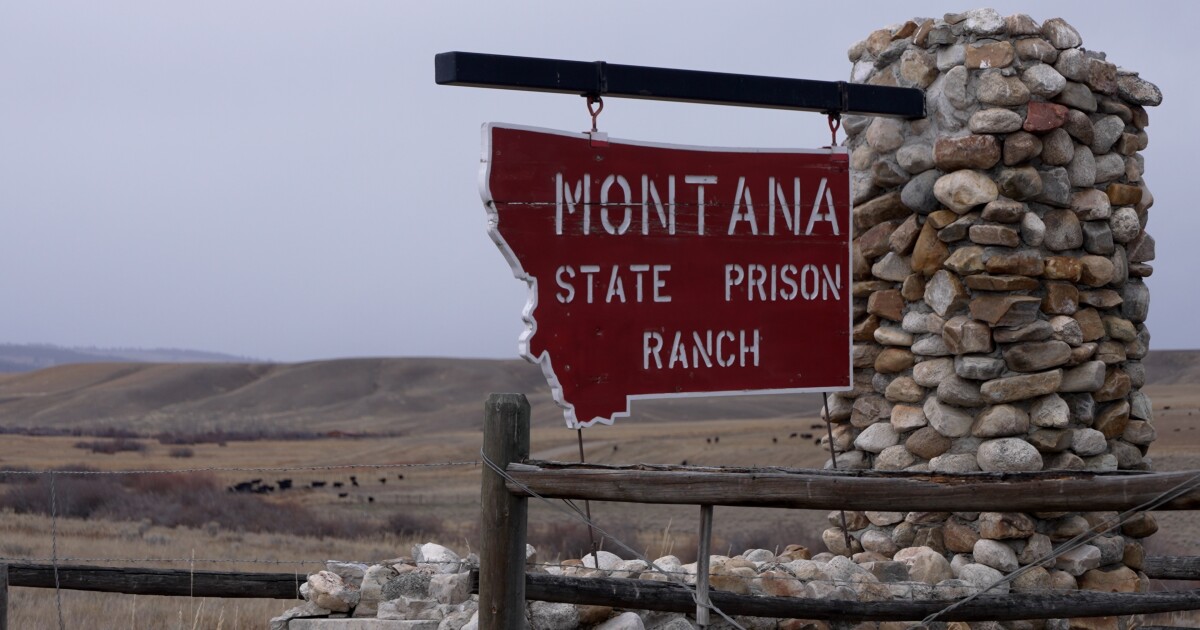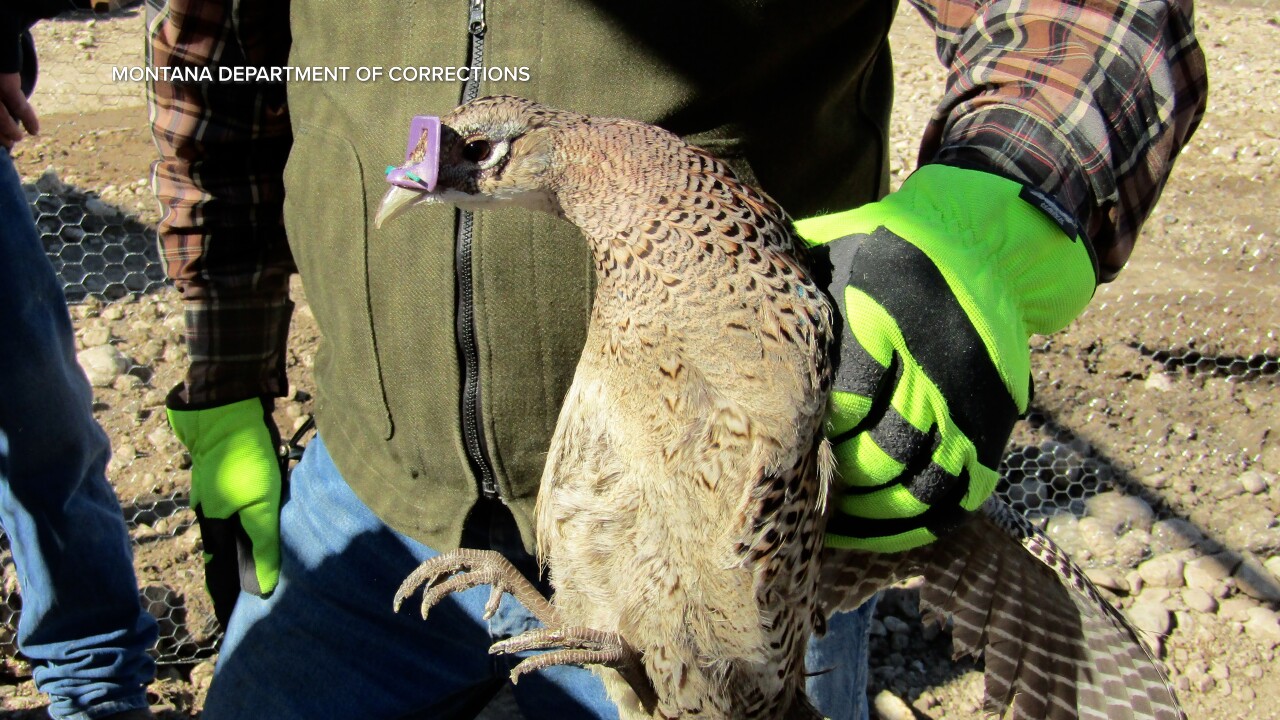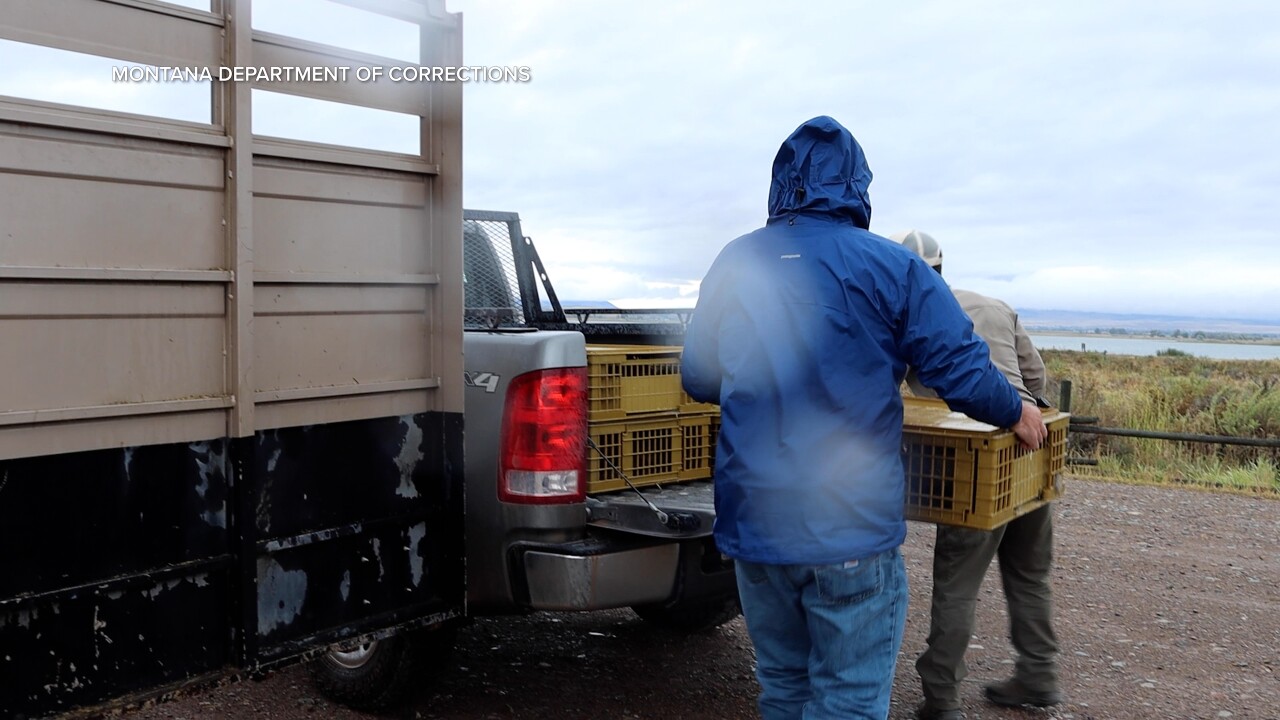Montana
Montana law on bathrooms assigned to sex at birth is on hold

MISSOULA — In a significant legal development, a group of plaintiffs has secured a temporary restraining order against the state of Montana concerning the controversial House Bill 121 — also known as the “bathroom bill.”
Missoula District Court Judge Shane Vannatta issued the order.
House Bill 121 would restrict bathroom access to sex assigned at birth. The law was signed into effect by Governor Greg Gianforte on March 27.
The plaintiffs allege that the newly adopted legislation violates their constitutional rights under the Montana Constitution.
The plaintiffs allege that the law infringes upon their rights to equal protection, privacy, and due process, particularly in relation to transgender and intersex individuals.
A preliminary injunction hearing is set for April 21, 2025; arguments will be presented regarding whether the law should remain in force.
In the meantime, the state is temporarily restrained from enforcing the provisions of House Bill 121 until a ruling is made.
Montana law requires people to use bathroom aligned with gender at birth

Montana
Montana Ag: Pheasant Program at State Prison Creates Unique Opportunities

DEER LODGE — Just under a dozen inmates at the Montana State Prison spend their days working on the Pheasant Ranch, combining two Montana traditions: agriculture and hunting.
The program offers well-behaved inmates the opportunity to raise pheasants from hatchery to release, providing both valuable life skills and a sense of accomplishment that’s often missing behind bars.
(WATCH: Montana Ag: Pheasant Program at State Prison Creates Unique Opportunities)
Montana Ag: Pheasant Program at State Prison Creates Unique Opportunities
“Feels good to have done a hard day’s work and actually be able to feel like you’ve accomplished something instead of just sitting in a cell day long,” said Mark McGuire.
MTN News
The work provides more than just a daily routine. It offers a chance to contribute something meaningful to the community.
“Gives you a sense of pride, especially when you see the birds going out for other people to enjoy,” said Bill Dunmire.
The Montana Correctional Enterprises programs provide jobs like the ones in the pheasant operation. Other opportunities include range cattle, dairy and dairy processing, irrigation, and fire crew. Altogether, up to 85 inmates can work while serving time.
MTN News

Nicholas McMaster, a ranch supervisor, said he finds it rewarding to watch the personal growth of the men in the program.
“Well, some of it is just learning how to get along with each other, you know? A lot of guys are here because maybe they couldn’t get along on the outside. I really try to work on them with that, and I’ve got a really good crew right now. They have fun and they work hard and they do what’s needed and then some,” McMaster said.
The inmates told MTN that prison can be a lonely place, but the pheasant program provides opportunities to care for the birds from the hatchery, all the way to their eventual release into Montana’s wild areas.
For some inmates, the experience is training them for goals beyond their sentence.
“For someone that aspires to open up his own dog rescue someday, it’s really been an experience on learning how to raise these animals,” McGuire said.
The pheasants are raised in collaboration with Montana Fish, Wildlife & Parks in their “Roosters for Recruitment” initiative to provide hunting opportunities for hunters, especially youth hunters. Thousands were transported from the prison and released this fall to about 30 different sites across the Treasure State.
Montana Department of Corrections
The prison ranch operates year-round, even after hunting season begins. Workers learn additional life skills, including maintenance, carpentry and welding.
National studies show a 7% reduction in recidivism for those who learn a new skill, and a 14% reduction when applying that skill to a job while in prison.
“It makes a world of difference to our morale and how we affect each other,” said Thomas Williams.
Strict biosecurity measures are in place to protect the flock from diseases like avian flu, limiting access to authorized personnel only.
Feeding, watering and preventing disease are among the daily requirements for maintaining a healthy pheasant flock. Some inmates had no prior knowledge of caring for the birds, but now they know better than just about anyone else in the state.

Montana Department of Corrections
Since pheasants started hatching in Deer Lodge, there have been 85,000 birds released across the state, with an estimated 60,000 set to be released next year, along with the addition of the flight pens at Pine Hills
With the program continuing to expand each year, more opportunities for incarcerated individuals will be created, while also furthering support for Montana’s hunting community.
Inmates said they take satisfaction in knowing their work benefits others.
“When I hear about people hunting the pheasants we raise. It just puts joy into my heart,” Williams said.
Montana
Understanding the Pesticide Problem in Montana’s Waterways – Flathead Beacon
Are pesticides a problem in Montana’s waters? How many of these chemicals, which include insecticides, herbicides, fungicides and more, commonly used on lawns and farms alike, have made their way into our waterways? How can we still control pests and keep our waters clean for future generations? The Pesticide Stewardship Partnership Program (PSPP) is an ambitious initiative led by assistant research professor Dr. Rachel Malison at University of Montana, Flathead Lake Biological Station (FLBS) and is funded by a U.S. Environmental Protection Agency grant. The PSPP is working to answer these questions in western Montana — the headwaters of the Columbia River Basin. To chart a course for sustainable pest management in Montana’s future, Malison said, the program aims to build a network of partners, collect data to detect if pesticides are in Montana waterways, and to provide education on sustainable pesticide practices and alternatives, and more.
This story starts in the field. Big Sky Watershed Corps member Chloe Czachor, who is serving her term at FLBS with PSPP, carefully pulls her weathered FLBS expedition off a gravel road near Ronan, Montana. The nearby irrigation ditch will be her fifth sampling stop of the day, another step in her largely solitary journey to collect samples from western Montana waterways that will be used to test for the presence of pesticides. In its first year of sampling, the PSPP is aiming to collect around 650 samples from rivers, streams and other waters in Montana’s portion of the Columbia River Basin. Most of these waterways have never been sampled for pesticides before, Czachor said, and whether they are contaminated with pesticides is unknown.
Czachor unloads her gear from the back of the vehicle, including an instrument that measures water characteristics like temperature and pH, a large glass bottle and water-resistant notebooks, and carries the gear over to the ditch which eventually flows back into the river. The instrument’s probe goes in the water to start measuring while Czachor wades into the stream and fills the bottle with water. After writing in the site name and location, Czachor enters the instrument’s readings into the notebook before pulling it out of the water. Then, she hauls her gear back to the vehicle, finds the next stop on Google Maps and starts driving again.
Later, at the PSPP team’s base at the FLBS, Czachor unloads the coolers filled with water sample bottles from her latest sampling run. These samples will join hundreds of others that the PSPP has gathered so far from across western Montana. Samples are delivered once a week to the Montana Department of Agriculture Analytical Laboratory in Bozeman, which analyzes each sample for 103 pesticide compounds. This is only a fraction of the number of different pesticides used in Montana, Czachor said, but detecting the presence of these chemicals can also indicate that other chemicals might also be present.
Czachor’s sample collecting work started in April. As the team’s main sample collector, she said that she has driven all over western Montana while sampling. Staff from FLBS and other volunteers are able to help Chloe sample part of the time, but she is leading the effort.
The travel takes a physical toll, Czachor said. “It’s long hours and I definitely need to be doing more yoga after how wrecked my body feels after being that long in the car. … These cars are so old, there’s no sort of lumbar support in the seats.” However, she said that she doesn’t mind when she is alone for so long on sampling runs. “I’m an introvert at heart,” she said. “I have my music and I have my podcasts and my audiobooks.” Sometimes, Czachor said that she calls friends while on long sampling drives. On the longest days, she said she focuses on the value of the experience for her career in conservation and on the unique opportunity of helping build a large-scale pesticide monitoring program where none existed before. “I’ve seen some pretty incredible places through this work, places that I would have never known existed. As someone new to Montana, I can’t think of a better way to see so much of the state. And to be seeing these beautiful places and know that I’m helping to protect them in some way is very rewarding,” Czachor said.
Czachor’s travels are guided by Research Coordinator Janelle Groff and Research Scientist Diane Whited. Together, they developed the maps of pesticide sampling sites the program uses and create the routes that Czachor and others travel each week on sampling trips. Whited used a variety of geospatial data to create maps of how likely waterways are to be contaminated with pesticides, based on different land uses and their proximity to surface water. Using these risk maps, the team then randomly created a roster of potential sampling locations on waterways with varying risks of pesticide contamination and near a range of land uses, from agriculture to residential areas to National Forests.
The sampling effort is divided into different types of sites, Groff said. Even though the program will collect many samples, the large area and variety of land uses the program aims to monitor mean that a limited number of samples can be collected at each site. However, pesticide concentrations can change over time as different pests emerge on nearby lawns and farms, stream flows rise and fall, and other seasonal changes shifts occur. PSPP monitors a broad area while also tracking changes in pesticide concentrations over time by dividing monitoring into three types of sites, Groff said. At a small set of focal sites, samples are collected every two weeks or once a month to detect potential changes over time. The larger set of baseline sites are only visited once or twice a year but span a much broader area. Focal and baseline sites are located on waterways at high risk of pesticide contamination. Together, these sites allow the program to monitor a large geographic area and understand changes over time, Groff said. In addition to testing focal and baseline sites, she said the program also tests reference sites, which are located in areas with low chances of pesticide contamination, like stream locations in National Forest or near remote headwaters. The results from these samples, which should show very low levels of pesticides, help substantiate that the testing regimen is accurate and provide data on baseline pesticide levels in the environment, Groff said.
Using this roster of potential sampling sites, Groff builds routes for Czachor to follow on her weekly trips. She said that building these routes involves Google Maps and “a lot of zooming” since she must ensure that Czachor can safely park her vehicle near each site and can physically reach the water. Groff also provides a list of alternative sites for each of Czachor’s trips, in case a site is inaccessible or the stream or ditch is dry when she reaches it.
The sampling effort just launched in the spring of 2025, Groff said, and extensive data will likely not be available for some time. In the future though, she said that this data will help Montana residents understand and address pesticide contamination in their waters by identifying where it is occurring and what pesticides are involved. The fate and transport of pesticides from land to water is very complex because there are so many pesticides and they have different characteristics, which means that some reach water more easily than others. The data collected will help individuals understand the water conditions around them and guide larger scale collective efforts to reduce the amounts of pesticides in the water, Groff said. She also said that knowing where pesticides are common in the water will help guide education about pesticide use, another key part of PSPP’s mission.

On a rainy and cold day on Flathead Lake, Rachel Malison stands by the rail of the boat and speaks to the small crowd about the PSPP program and the importance of using good stewardship practices to control pests. Malison is speaking at the annual FLBS Research Cruise, where people from neighboring communities can learn about research at the station and see demonstrations while cruising Flathead Lake on the chartered boat. Malison explains to the group that the available tools for controlling pests are like a Swiss Army knife, and that people tend to pull out the pesticides first to tackle a pest problem, like they pull out the knife first even though another tool might be just as or more effective. She says that sustainable pest management requires using all the tools available in a careful and judicious manner, including proper use of pesticides, to keep pests controlled and waters clean.
Opportunities like this are part of the PSPP’s broader educational project, Malison said. PSPP uses both direct outreach, like speaking at the Research Cruise or giving presentations to homeowner’s associations, and indirect outreach through partners like the Montana Watershed Coordination Council to spread information about proper pesticide use and best stewardship practices, she said. The education work also covers important water science concepts, like the idea that water moves pollutants, including how large rain events or excessive lawn watering can move chemicals on the land into the groundwater or nearby streams. “For a lot of the outreach and education, we’ve been realizing that we need to start by sharing more about how water moves and how our actions influence what is carried with that water when it’s moving” she said. This education is “trying to help people know that there are more options to pest management and that their actions can make a difference,” Malison said.
“That part of the program is going to grow and continue to get bigger as the program progresses,” Malison said, with PSPP being only in its second year. She said that the program is developing more outreach materials and going to more events, like the Northwestern Agricultural Research Center Field Day or the Bigfork Monday Market. The pesticide sampling work will help guide this outreach, she said, letting the team identify areas with particularly high levels of pesticides and target outreach to the have the maximum impact. “If we find pesticides in waters near different land uses, we can share that information with people and also provide ideas on how land uses could be modified to help protect our waters,” Malison said.
These outreach efforts have already had impacts, said Malison, such as one homeowner’s association that it now considering a buffer strip between its lawns and nearby ponds to reduce the movement of pesticides into the water after hearing a talk from her. Although reaching everyone or making large changes to pesticides use may be difficult, Malison said that even small changes, like spraying lawns twice a year instead of four times, can reduce the amount of chemicals that enter the water.
For Malison, this work has personal meaning. “We live here, I have children, I want their children to have healthy rivers and functioning ecosystems too. We produce chemicals and we use them, it’s not just going away, so we need to make the best decisions we can to protect our waters.”
Josh Pike is a Missoula-based environmental journalist with a focus on water issues. He works as a journalism intern for the Flathead Lake Biological Station.
Montana
TaxFree RV Highlights Montana Registration Benefits for Full-Time RVers Seeking Residency Advantages

RED LODGE, MT – November 19, 2025 – PRESSADVANTAGE –
TaxFree RV, a vehicle registration specialist operating since 2005, is drawing attention to the growing trend of full-time RVers establishing Montana residency to access significant tax savings and voting benefits through the state’s LLC registration process.
The company reports an increasing number of recreational vehicle owners are discovering that Montana’s unique tax structure, which includes no state sales tax on vehicle purchases, makes it an attractive option for those living full-time in their RVs. Through the establishment of a Montana Limited Liability Company, RV owners can legally register their vehicles in the state while potentially saving thousands of dollars in sales tax that would otherwise be due in their home states.
Beyond the immediate financial benefits, full-time RVers who establish Montana residency gain access to additional advantages including simplified vehicle registration processes, the possibility of obtaining permanent license plates, and the ability to participate in Montana’s electoral process. The state’s RV-friendly policies have made it a popular choice among the growing community of Americans who have chosen to make their recreational vehicles their primary residences.
“Full-time RVers face unique challenges when it comes to establishing residency and managing their legal affairs,” said Henry Jordan, senior registration specialist at TaxFree RV. “Montana’s LLC structure provides them with a legitimate solution that addresses both their financial concerns and their need for a stable legal domicile. We handle all the complex paperwork and compliance requirements remotely, allowing our clients to focus on enjoying their travels.”
The process of establishing a Montana LLC for vehicle registration involves several steps, including forming the limited liability company, appointing a registered agent, and completing the vehicle registration through the appropriate Montana county. TaxFree RV manages each aspect of this process, ensuring all documentation is filed correctly and in accordance with Montana regulations.
The company’s registered agent services provide an additional layer of support for full-time RVers who may be constantly on the move. This service ensures that any important legal correspondence related to their vehicle or LLC is handled promptly and securely, regardless of where their travels take them.
RV registration with TaxFree RV extends beyond just motorhomes and travel trailers. The company also assists with registering fifth wheels, toy haulers, and other recreational vehicles through the Montana LLC structure. Each type of vehicle requires specific documentation and compliance with particular regulations, which the company’s team navigates on behalf of their clients.
The financial implications of Montana registration can be substantial, particularly for owners of high-value recreational vehicles. In states with sales tax rates ranging from 6 to 10 percent, the purchase of a luxury RV could result in tens of thousands of dollars in tax obligations. Montana’s zero sales tax policy eliminates this burden entirely for vehicles registered through a Montana LLC.
TaxFree RV has assisted thousands of vehicle owners with Montana LLC formation and registration since its founding. The company’s team brings over 50 years of combined experience in Montana vehicle registration and compliance, providing personalized service to ensure each client’s specific needs are met while maintaining full legal compliance with all applicable regulations.
###
For more information about TaxFree RV, contact the company here:
TaxFree RV
Henry Jordan
888‑441‑5741
sales@taxfreerv.com
9 S. Broadway Ave., Suite F
Red Lodge, MT 59068
Information contained on this page is provided by an independent third-party content provider. XPRMedia and this Site make no warranties or representations in connection therewith. If you are affiliated with this page and would like it removed please contact pressreleases@xpr.media
-
Business7 days ago
Fire survivors can use this new portal to rebuild faster and save money
-

 World5 days ago
World5 days agoFrance and Germany support simplification push for digital rules
-

 News6 days ago
News6 days agoCourt documents shed light on Indiana shooting that sparked stand-your-ground debate
-

 World1 week ago
World1 week ago2% of Russian global oil supply affected following Ukrainian attack
-

 World6 days ago
World6 days agoCalls for answers grow over Canada’s interrogation of Israel critic
-

 World6 days ago
World6 days agoSinclair Snaps Up 8% Stake in Scripps in Advance of Potential Merger
-
Business5 days ago
Amazon’s Zoox offers free robotaxi rides in San Francisco
-

 Politics6 days ago
Politics6 days agoDuckworth fires staffer who claimed to be attorney for detained illegal immigrant with criminal history

























